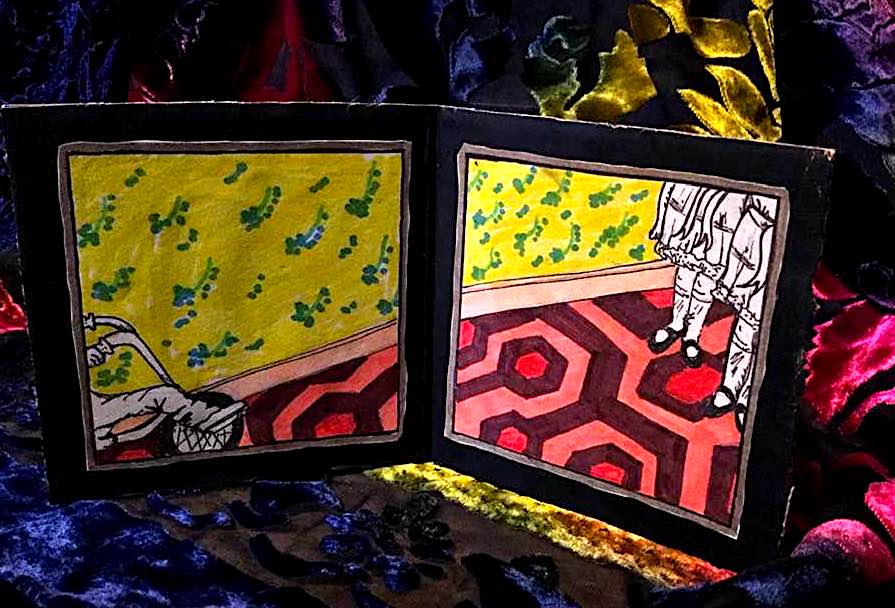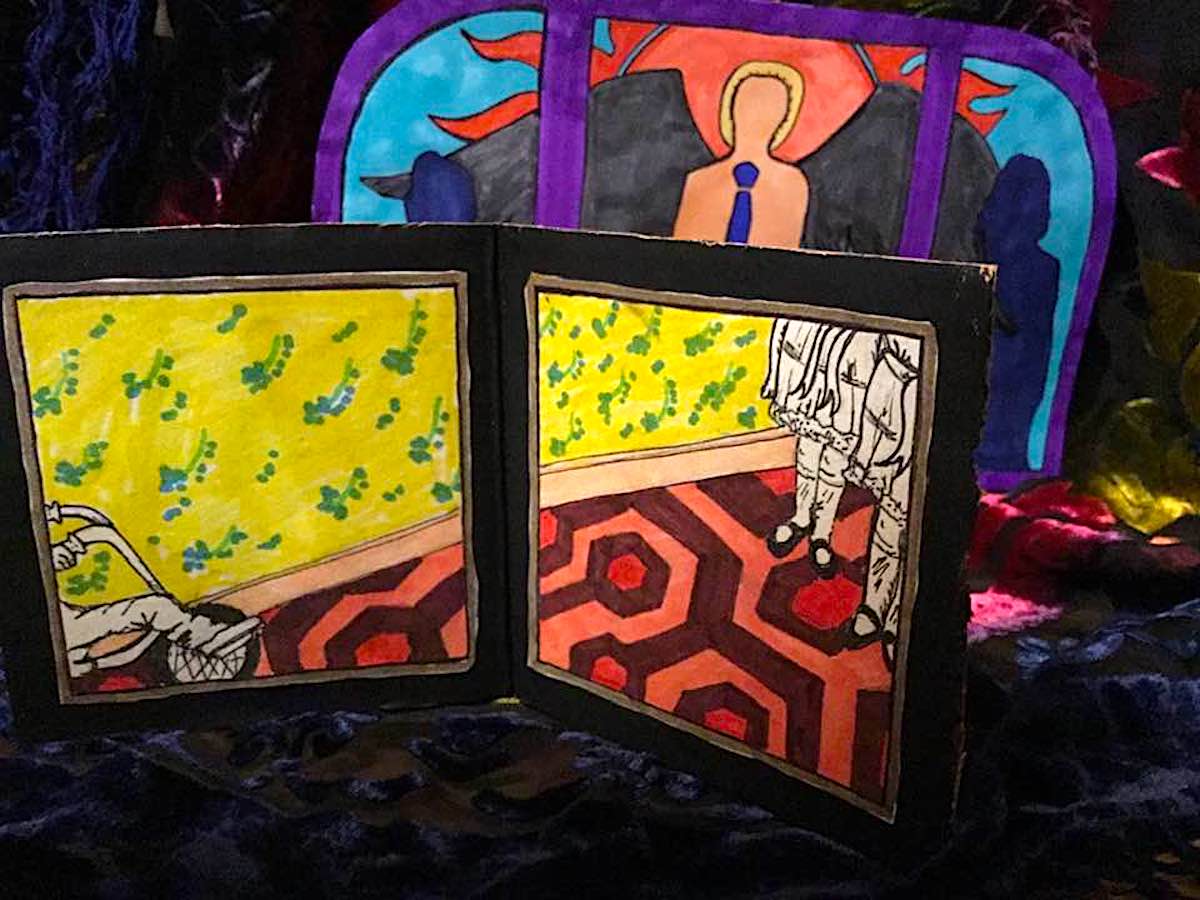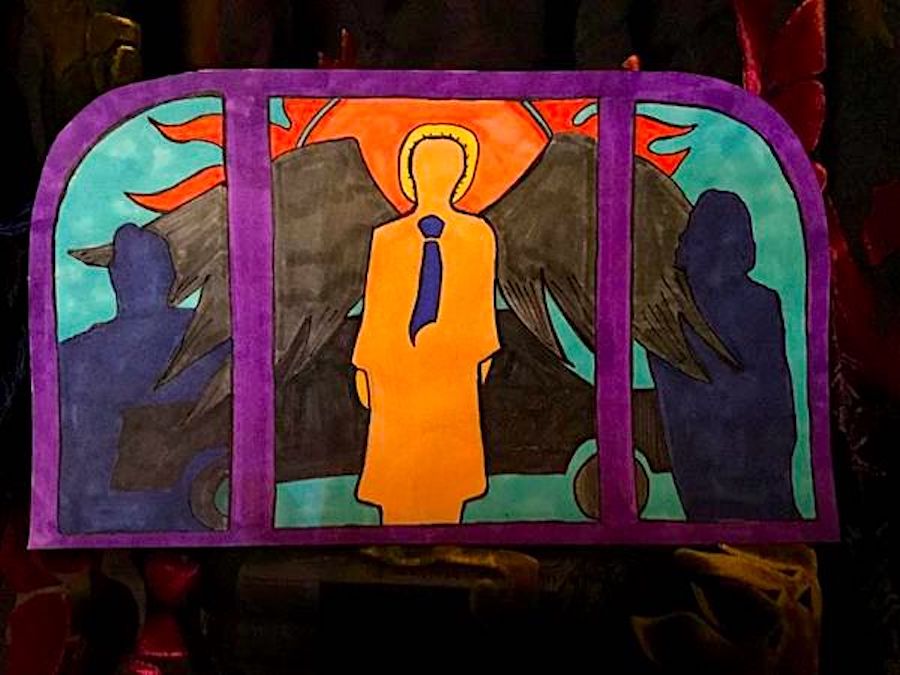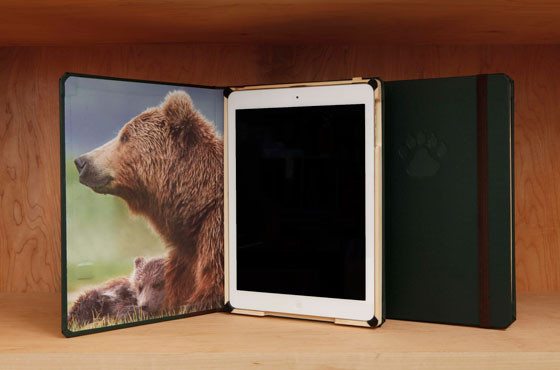This summer’s Be the Artist 2021 will help readers discover visual art-related words.
The Words: Diptych and Triptych
Most people may recognize the prefixes in these words means “two” and “three,” but this is more than just drawing two or three pictures of the same theme.
Diptychs and triptychs are pieces consisting of two or three paintings or panels that, when joined together, form the “bigger picture.”
These are the two most basic forms of works called “polyptychs,” and, yes, there are examples of big, elaborate storytelling pieces from a “quadriptych” (four pieces) to a “decaptych” (ten pieces) and beyond.
The related term in all polyptychs is “ptyche,” (pronounced as “tick,” not “tich”) a Greek word that means to fold. Diptychs and triptychs were “joined together,” often with hinges that allow them to stand on their own. These allowed them to be folded like books and opened up for display.
Does this mean all diptychs and triptychs have to be physically joined together by hinges or similar means? No, it doesn’t. There are several more modern examples of these works, where the pieces remain separate. The key, however, is if they were to be joined together, the overall story would still make sense, form a more complete image.
Many early examples of these were flat-paneled carvings in materials like wax, wood, or ivory, and were altarpieces in religious art. Smaller pieces were easy to fold and carry, something that came in handy with religious rituals and events that have been found in Buddhist, Christian, and Islamic antiquities. Some pieces discovered dated back to the late Roman Empire, and some were made small enough to be worn as pendants.
Over the years, the subject matter of the diptych and triptych evolved to also include more secular themes like family heraldry and portraits to, even more recently, nature and pop culture icons.
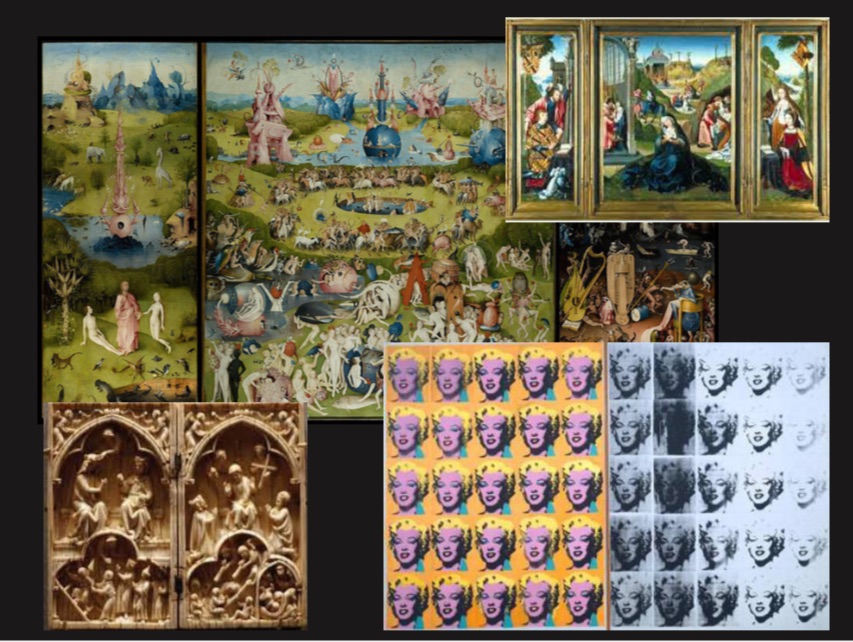
One of the most famous triptychs is The Garden of Earthly Delights, painted in oils on large wood panels somewhere in the late 1400s or early 1500s by Dutch painter Hieronymus Bosch. The entire piece is 12 feet long, is seen at Museo National del Prado in Madrid, and is still the topic of conversation among art critics and lovers who debate whether it is a celebration of physical delights, a warning against the costs of temptation, or something else entirely.
Different materials were used, and now the diptych and triptych can include works on everything from silkscreen to stained glass windows to photography. One famous more recent example of this is Andy Warhol’s 1962 silkscreen, the Marilyn Diptych, featuring two silkscreened panels of multiple Marilyn Monroe portraits.
If the idea behind these works is still confusing, author Lemony Snicket gave a good, very personal description in the fifth book in his Series of Unfortunate Events: The Austere Academy:
“If you have walked into a museum recently—whether you did so to attend an art exhibition or to escape from the police—you may have noticed a type of painting known as a triptych. A triptych has three panels, with something different painted on each of the panels. For instance, my friend Professor Reed made a triptych for me, and he painted fire on one panel, a typewriter on another, and the face of a beautiful, intelligent woman on the third. The triptych is entitled What Happened to Beatrice and I cannot look upon it without weeping.”
The Project: Ghostly Gatherings
Polyptyches have included everything from religion to entertainment, ranging from intimate portraits to large, busy landscapes.
Let’s take this visual storytelling and apply it to favorite ghost stories and supernatural tales.
First, think of a favorite strange tale that would fit into groups of two or three. These could be characters like Disney’s Haunted Mansion’s Hitchhiking ghosts or the angel and demon bromance of Crowley and Aziraphale in the book Good Omens.
These could also be two sections of a big story, like the Addam’s Family’s home and cemetery garden, or a long hallway in The Shining.
Next, think of what type of story you want to tell and how much space you need for it. Will you need a separate piece of paper for each image, or can you fit all three sections on one piece? (Hint: if planning on making these stand-alone, don’t make them too big.)
Finally, will you be making a diptych or triptych? Other than the obvious “two pictures versus three pictures,” diptych images are almost always identical in size to each other. This works for both wall-mounted art and pieces that will be put together in folded “book” form.
With a triptych, the middle image should be larger than the other two. Sometimes, with wall-mounted pieces particularly, it be could be taller as well as wider. If making a folded piece, the middle is often exactly twice as wide as the two outside pieces, so each of the outside pieces can fold together over the middle piece like window shutters.
However, before worrying about the folding, get those designs drawn. Sketch them with colored pencils or markers, or go the extra supernatural mile and paint them. This is up to the artist.
Draw the “frame” for each image first. Next, think about the focus of each piece and draw it first, whether it a figure drawing or the foreground of a landscape. Think about how these are going to fit together.
Now find a way to “link” the story. This may be as simple as a consistent background color or more detailed with a consistent setting like a long swamp or cityscape.
Just have fun and tell three little complementing pieces of one larger story.
One easy way to think about it is each panel in a polyptych is like a chapter in a book. These could be just pieces of one long novel that just tell one part of the story, or they can be an individual character or subject profiles that look fine on their own, but come together to form a full anthology.
Now make them stand-alone, if desired.
Cut each section of your diptych or triptych out and place them on a piece of thick corrugated cardboard. Using an art utility knife or scissor edge, gently cut a straight line between the cardboard between the edges. Be careful to leave one side uncut. Fold the cardboard at the creases so that it will stand up on its own.
Lightly glue or use double-sided tape to attach each piece of your work to the cardboard, and trim around the entire piece to clean it up.
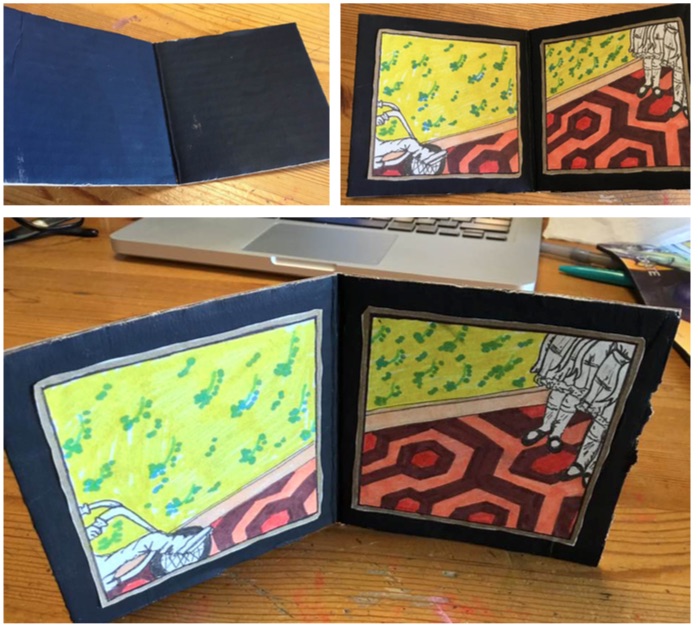
If you’re really confident, you can skip the “cut and paste” and draw the images directly on the cardboard, but I don’t recommend that your first effort.
Whether secular or sacred, there is something very meaningful about looking at how smaller pieces of a story or setting, or individual members of a family or group, fit together to give us a more complete view.
You can stand back and look at the entire “world” of the piece, or close in to learn the more intimate details of the isolated section for an entirely different perspective.
That’s the beauty of these two simplest forms of the polyptych, and a good lesson in how we view everything in our lives.
